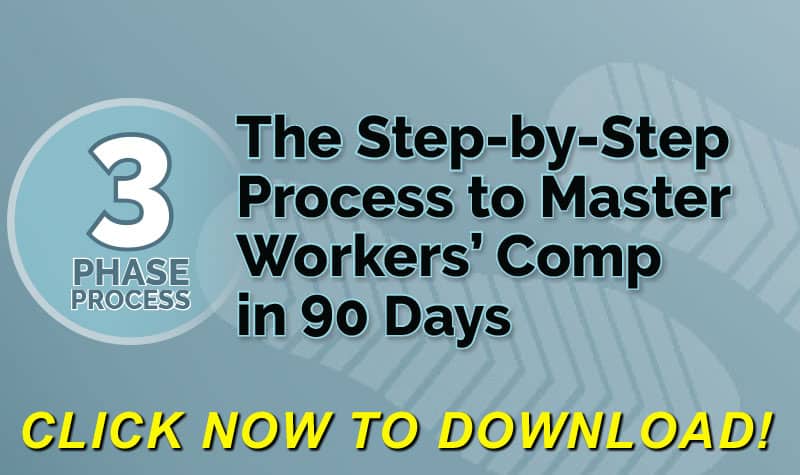Interested stakeholders who want to be proactive should continually search for ways to transform their workers’ compensation programs. This should also include the ability to identify areas of improvement and make immediate changes. These changes should continue to provide injured employees with the benefits they are entitled to receive, and operate in an honest and ethical manner – that treats the employee as a VIP. Here are steps for anyone seeking to make changes at warp speed.
Avoid Common Errors and Get Started
Sometimes the hardest thing about starting a workers’ compensation program assessment is the willingness to start. Leaders seeking to make a positive impact need to have the willingness to make the decision and see it to fruition. Once started, important goals should be identified as part of the transformation process. Areas to focus on can include:
- Reducing workers’ compensation program costs;
- Reducing the rate of claims litigated;
- Improve morale within the business, or on specific job sites;
- Coordination of medical care with multiple medical providers; or
- Returning injured employees back to work following an injury.
The list is endless. Leaders wanting to make an impact will pay careful attention and establish goals to reach an outcome to reduce program costs.
Click Link to Access Free PDF Download
Establish Reasonable Program Goals
It is impossible to have the “perfect” workers’ compensation program. When setting goals, they need to be measurable. It is also important to be realistic, yet should challenge all within an organization. Common goals can include:
- Reduce injury rates through an emphasis on workplace safety;
- Reduce the rates of litigated claims; and
- Improve the time it takes for an injured employee to return to work (reduce the frequency of “lost time” claims).
Once the goals are identified and agree upon, a plan of action should be implemented. Suggestions can include:
- Injury reduction: Review of safety training, and how it is emphasized. Make it a daily priority. It also requires a commitment by everyone – especially senior leadership.
- Litigation reduction: Implement an injury triage program that provides immediate medical care, direction, and coordination following a work injury;
- Return-to-work: Have a point of contact for these matters. This person can serve as a liaison between the medical providers, and management. Understanding restrictions is key.
Engage Leaders at All Levels
It is important to engage leaders at all levels. This should also go beyond the claim program itself and rededicate the entire team to engaging their insureds. Common themes that can be communicated to these important partners should include:
- Making workplace safety paramount to the environment. This will require all levels of management and employees to be thinking about safety whenever they enter the job site or company location. It can be something as simple as cleaning up spills, encouraging stretching at the workplace, and employee wellness;
- Recommit to best hiring practices. This is something every employer should consider when reviewing job applications, selecting people to interview, and making hiring decisions. The topic of safety should be discussed during this process so the applicant’s responses can be measured. If the potential hire is not committed to safety, they likely will not make it a priority later on;
- Hold all supervisors and managers accountable. This is multifaceted and should include a commitment to a safe work environment, responsiveness to employee concerns about business practices, and injury response. Having people dedicated to grow workplace morale, and reduces workers’ compensation costs; and
- Develop relationships with medical providers. It is important for employers to develop relationships with local medical providers that are accessible to all employees following a work injury. This should also include the use of telephonic nurse case management so non-life-threatening work injuries can be properly assessed for care to be coordinated.
The key stakeholders at the insured should also be identified so they can monitor these important areas.
FREE DOWNLOAD: “Step-By-Step Process To Master Workers’ Comp In 90 Days”
Conclusions
Time is of the essence when it comes to the transformation of any workers’ compensation program. Not only does it include hard work and dedication, but it also must include other elements. This involves avoidance of common errors, establishing aggressive but achievable goals, and engagement by all. It also requires a willingness to change, and take action when it comes to reducing injuries within the workplace.

Contact: mstack@reduceyourworkerscomp.com.
Workers’ Comp Roundup Blog: https://blog.reduceyourworkerscomp.com/
©2020 Amaxx LLC. All rights reserved under International Copyright Law.
Do not use this information without independent verification. All state laws vary. You should consult with your insurance broker, attorney, or qualified professional.
FREE DOWNLOAD: “Step-By-Step Process To Master Workers’ Comp In 90 Days”








